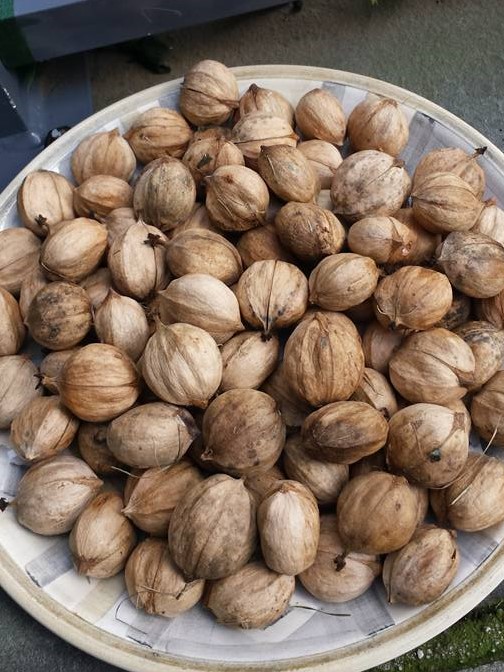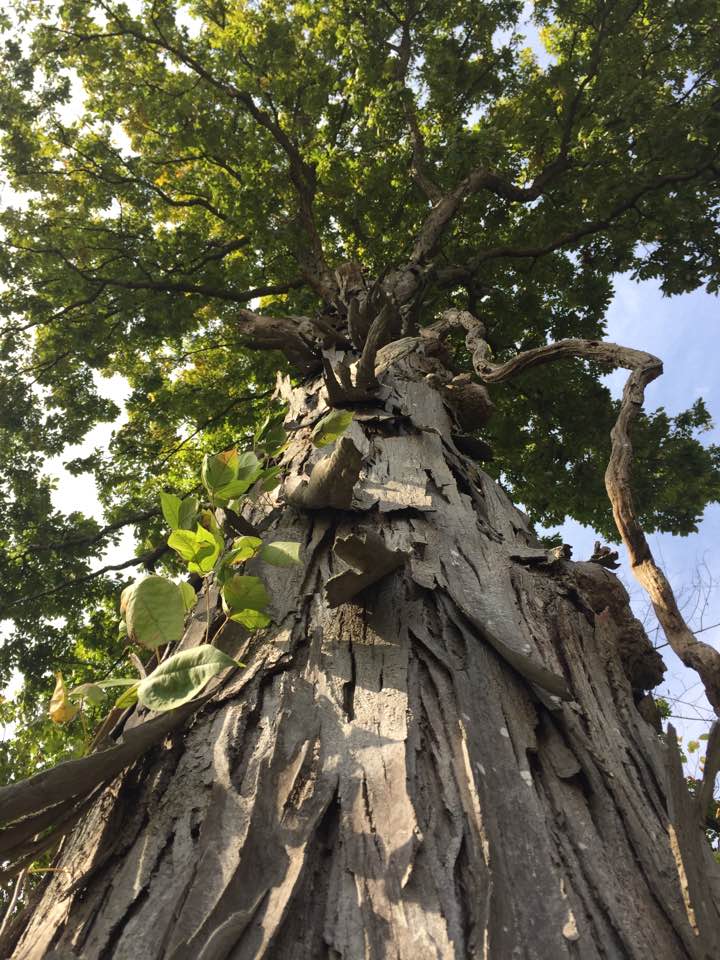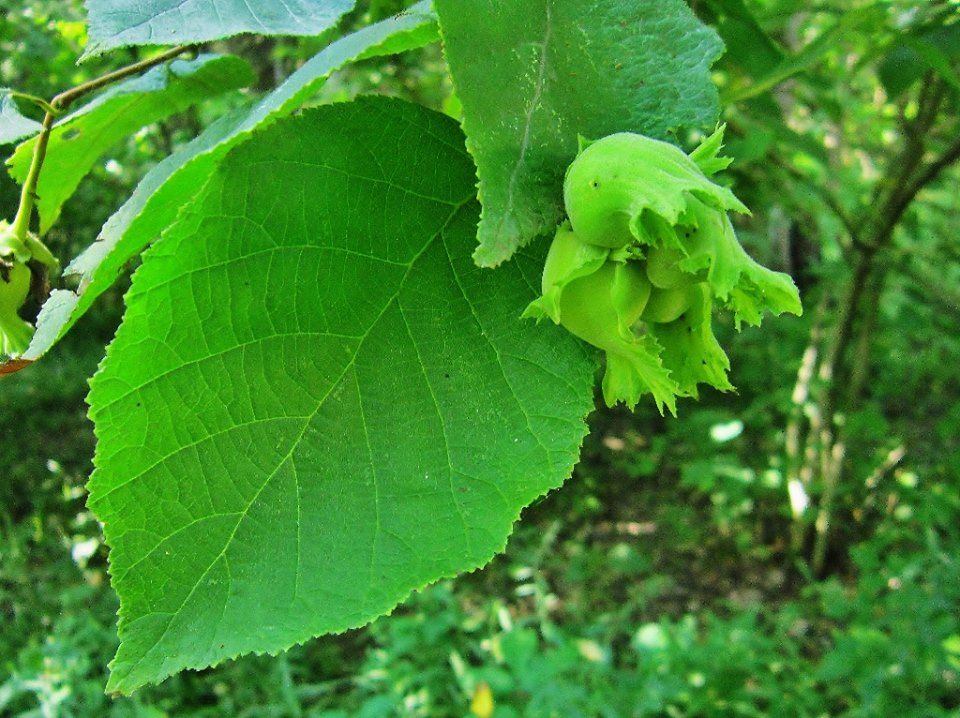The air is crisp and clean. It is permeated with the musty scent of autumn. The leaves of the hardwood trees are changing into their brilliant fall plumage. There is no better time to be in the woods, really.

Just ask our state park horticulturist, Mike Groenwold. He says one of the reasons to take a long walk in the woods during autumn is to gather some delicious, nutritious, wild nuts.
I wholeheartedly agree!

And yes, we have an array of edible nut-producing trees in Nebraska! But, plan on competing with fox squirrels, raccoons, wild turkeys, white-tailed deer and a myriad of other wildlife including insects after they fall to the ground.

Historically, Native Americans and pioneers of our country took full advantage of wild nut crops.
A favorite of Native Americans was the pecan, from which they pressed oil for cooking and ground flour for making bread. Another preferred nut of Native Americans was the hickory, which they ate raw, and stored in great number as a food source in the winter. Black walnuts were also used by Native Americans. The walnuts were pounded and boiled in water, and the oil skimmed off to make butter and hair oil.
Wild nuts were a welcome addition to the pioneer larder, too, especially in the lean years when grain crops were not bountiful. Searching for and collecting wild nuts was even a form of recreation for settlers. “Nutting parties” were a popular fall pastime.
Today though, most of us collect edible, wild nuts for pleasure as a hobby.

Foraging for nuts, or nutting, as it is called, is a fun way to add wild edibles to your food pantry. It is also a great excuse to spend some time enjoying the nice, cooler weather of autumn with family or friends!
Most nuts are ready for harvesting and eating this time of year, in the fall. Although there is variability according to geographic area, local climate and recent weather. Black walnut, butternut, chestnut, pecan, American hazelnut or filbert, and hickory nut are among Nebraska’s wild nut trees. Persian or English walnut and heartnut are also grown in Nebraska.
Fortunately, Nebraska is well-suited to grow several types of nut producing trees and shrubs, according to the Nebraska Forest Service:
* Pecan — Native to the southeast, the pecan tree has proven to be quite adaptable to eastern Nebraska. In addition to its tasty nuts, it makes a great shade tree. Unlike black walnut, it is not a messy tree.
* Shagbark hickory — This southeast Nebraska native rarely produces a heavy nut crop, but it is an important wildlife tree and provides good shade. Its bark, “shaggy” with vertically peeling straps, is an added bonus.
* Black walnut — Native to Nebraska, this tree has proven adaptable to a wide range of soil and site conditions across the state. The strong flavor of this walnut’s meat is an acquired taste; once acquired, it’s hard to resist!
* American hazelnut (filbert) — A multi-stemmed shrub native to eastern Nebraska, it is 7-12 feet in height and width. This easy-to-grow plant, with a nice apricot fall color, produces small, tasty nuts in shaggy husks that are a favorite of turkeys and other wildlife.
*Chinese chestnut — A small, wide-spreading tree that produces buttery nuts suitable for “roasting on an open fire” and other culinary uses. It’s resistant to chestnut blight, which has devastated the once grand American chestnut.

Each species of nut kernel has its own distinct flavor. Pecan, for example, is mild and sweet while black walnut is rich and robust. Hickory is buttery and sweet, tasting somewhere between a pecan and a walnut. Many of the foods we enjoy are enhanced by the fresh wild nuts we can add. Bread, muffins, fudge, brownies, cake, salads, meats, soups, coffee and ice cream are bolstered by the inclusion of nuts!
Americans have discovered the benefits of tree nuts.
USDA studies show that consumption of nuts has increased by more than 45 percent over the past 20 years.
Nuts truly are rich sources of protein, dietary fiber, good fats, vitamins and antioxidants.
So, why collect any of these wild nuts to eat? Why not just go to the local supermarket and buy some?
Efficiency aside, there are plenty of other reasons to gather wild nuts.
Wild nuts are compact, easy to store, and contain no additives. If you’ve ever tried a fresh raw nut from the wild, it is a unique experience. It is a distant scenario from the dried, treated, warehoused nuts on most grocery shelves.
There are some important notes of caution with wild nuts, however. If you’re not completely certain that a nut is edible, do not eat it! If you have allergies to nuts, or you’re using medication, consult with your allergist, physician or pharmacist before foraging. Some nut compounds have been known to interfere with certain medications.
Even though wild nuts are generally quite abundant, you should take only what you will use. Do not over harvest and prevent local wildlife from stocking up for the winter.
Now, to collect wild nuts, you must first be able to correctly identify and learn about the nut trees that grow in your area.

Then, get permission from the landowner, head into a wooded area, see what’s available and collect the edible fallen hulls or shells of the nuts off the ground. Hull or shell nuts as soon as you can after harvest. Discard any nuts with holes in the shells; these are insect-infested. It is strongly recommended that you wear either rubber or plastic waterproof gloves when handling black walnuts to prevent the nuts from staining your hands. Walnut stains are difficult to remove and linger.
After hulling the nuts, spread them out and wash them off with a garden hose or kitchen spray nozzle. A tub of water may also be used. You can separate the nuts with no kernels from the good nuts by putting them in the water and removing the ones that float.
Dry the cleaned nuts quickly and thoroughly. Store them in a cool, dark spot with good air circulation for later use. You will need to guard against mold as well as insects and rodents. Shelled nuts can be stored in airtight containers for a short time in your kitchen pantry or for longer periods in your freezer.
If you would like to get more information about nut trees in Nebraska, contact the Nebraska Nut Growers Association.
The post Nuts for Nuts! appeared first on NEBRASKALand Magazine.















